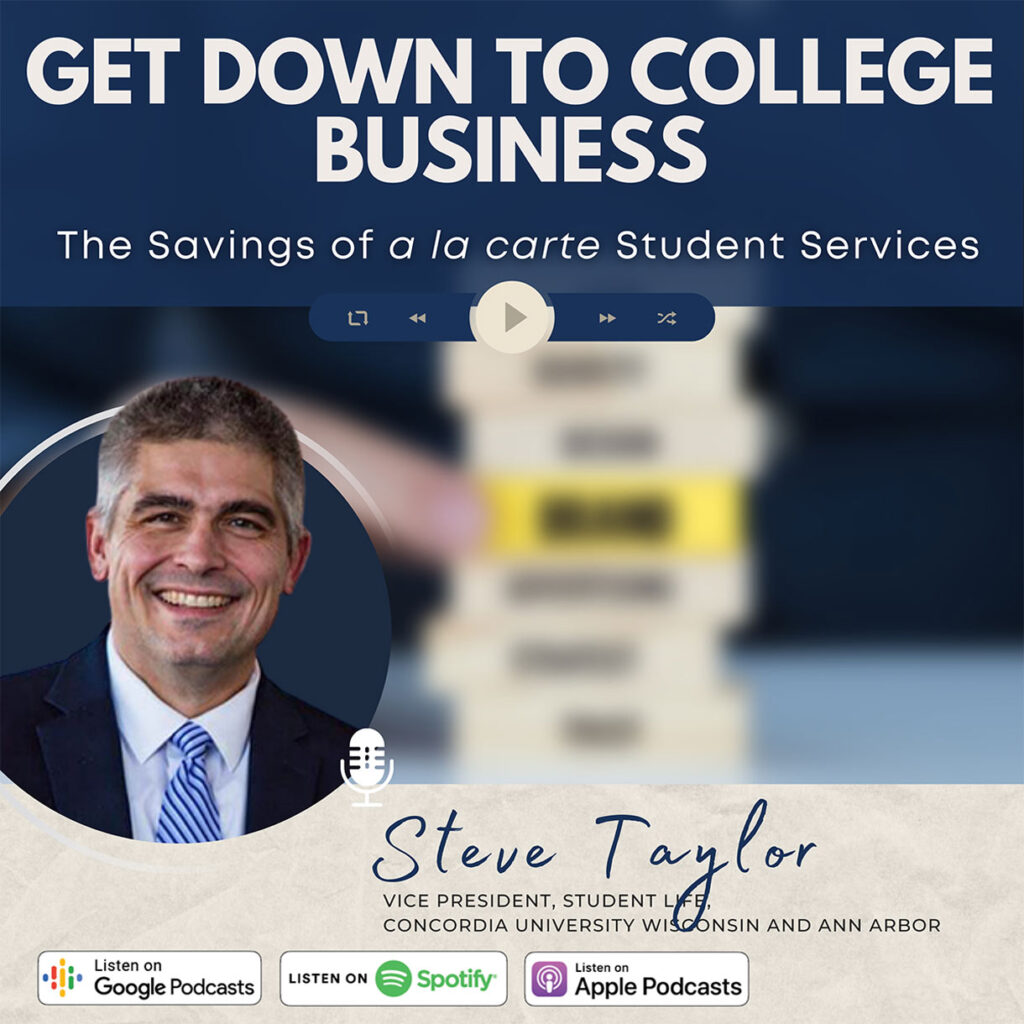Listen to the exclusive preview.
Show Notes
In this episode, Dr. Sarah Holtan talks to Dr. Steve Taylor, who is the Vice President of Student Life at Concordia University Wisconsin and Ann Arbor. They discussed how different students need different student services and how an a la carte model can benefit each type of student population. Moreover, during their conversation they touch on crucial points such as: How much does it cost to have a thriving student services experience for traditional students? How do they foresee the a la carte model working for students?
Steve not only oversees the many usual functions in student affairs, but he also oversees financial aid. So he has a rich perspective on both sides of the coin. He believes that the best service is the best one for that student because every student is different and the a la carte model serves that purpose.
Tune in as Steve shares stories, personal experiences, advice and much more, not only for students and parents, but also schools who are looking into providing better service for their students and improving their model for better retention and satisfactory rate.
Episode Highlights
03:47 – Every school is going to be a little bit different. But when you start looking at the total expenses, and this is just on the student service side… It’s certainly much more expensive for an undergrad and much more expensive for a resident student.
12:38 – We talk about the academic side, it’s really easy to calculate how many professors you need for how many students, how many classes. It’s a pretty easy equation… What is enough? What do you need to spend? And most people in my seat say as many dollars as I can get, because no matter what you give me I can provide something that’s going to be of value and support students in a significant way or an important way.
16:48 – I think there are certain students that are very budget conscious, and that are looking for an experience, but they want more control. I don’t think that’s the typical student, but they’re out there. And it certainly could be students who are traditional age. It could be students that are residential, but these are students that also are probably going to want to pick the type of environment they live in.






